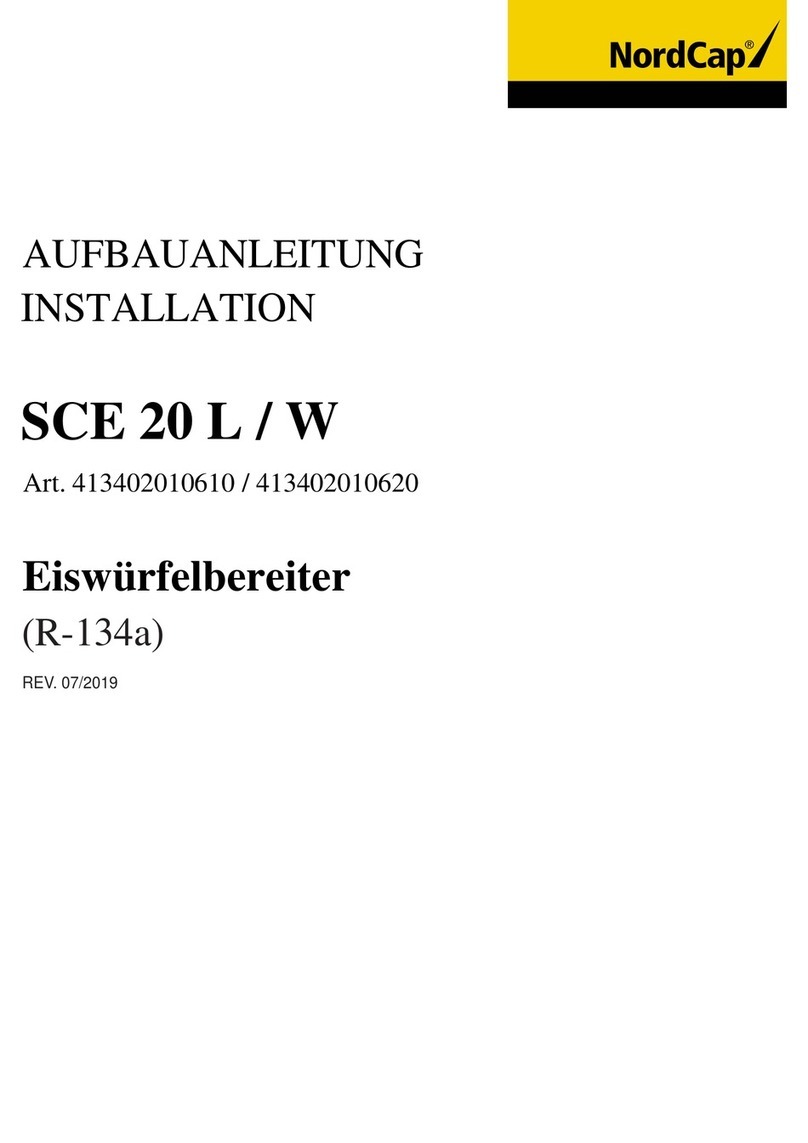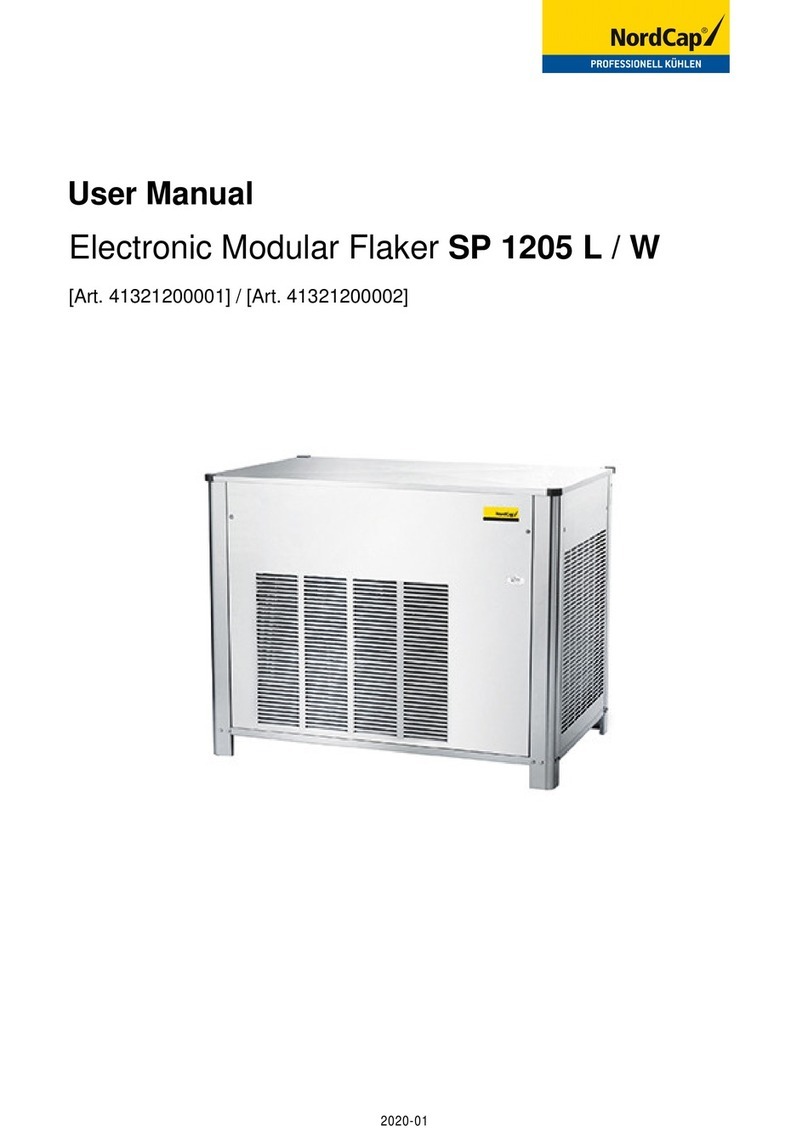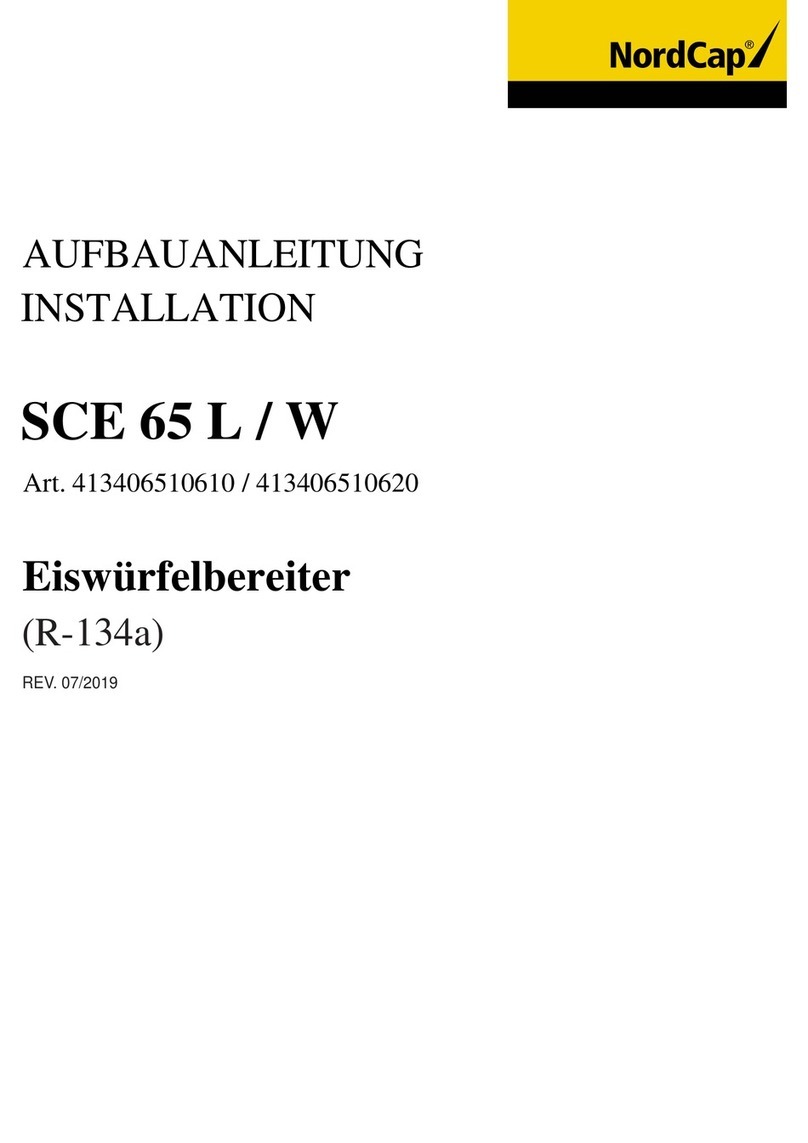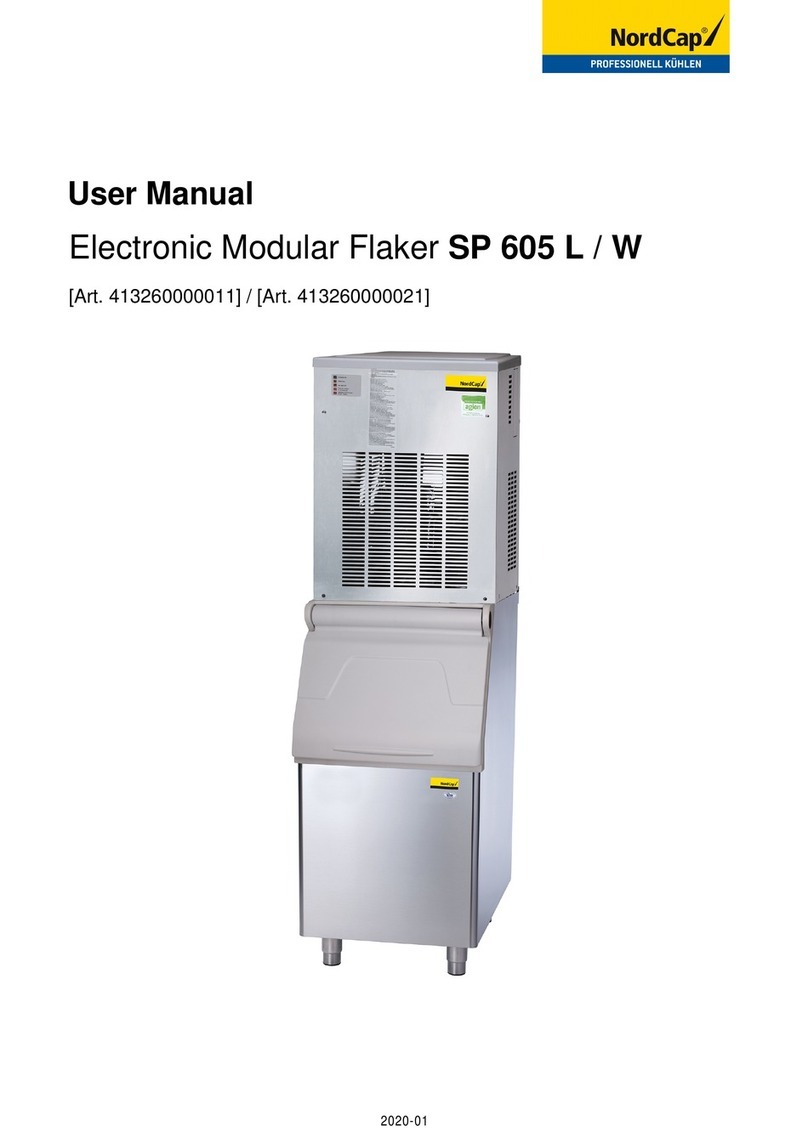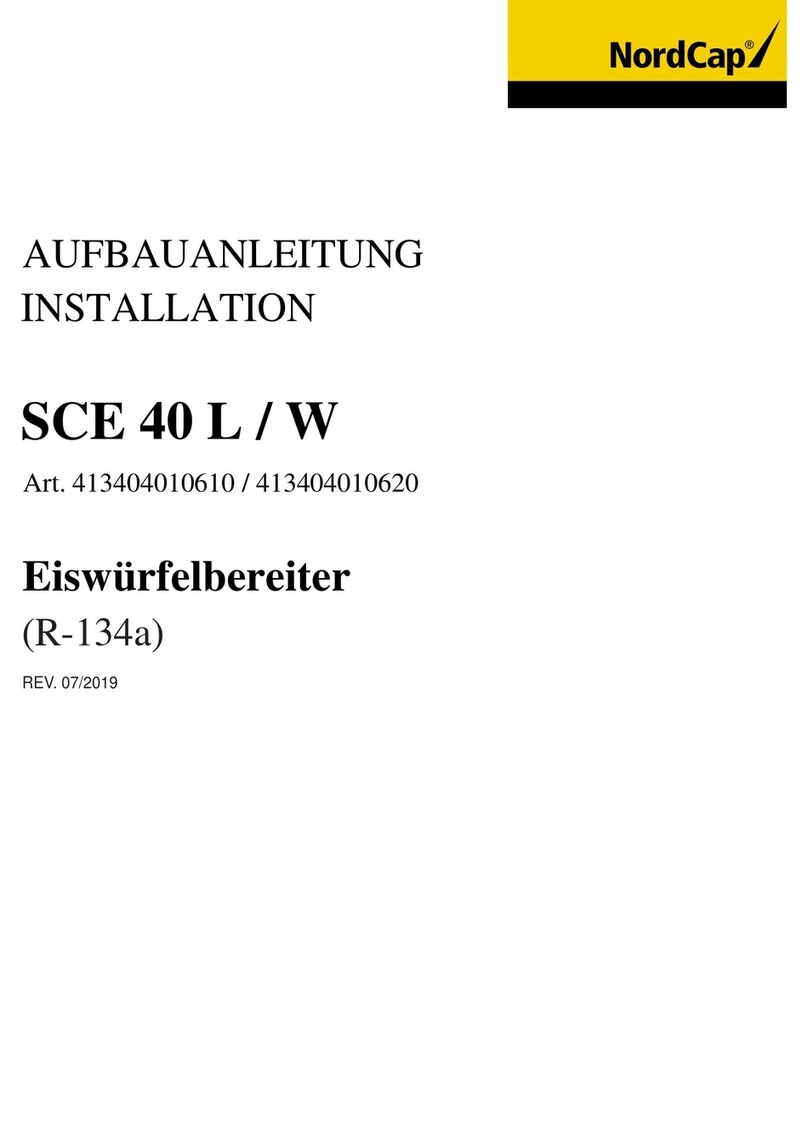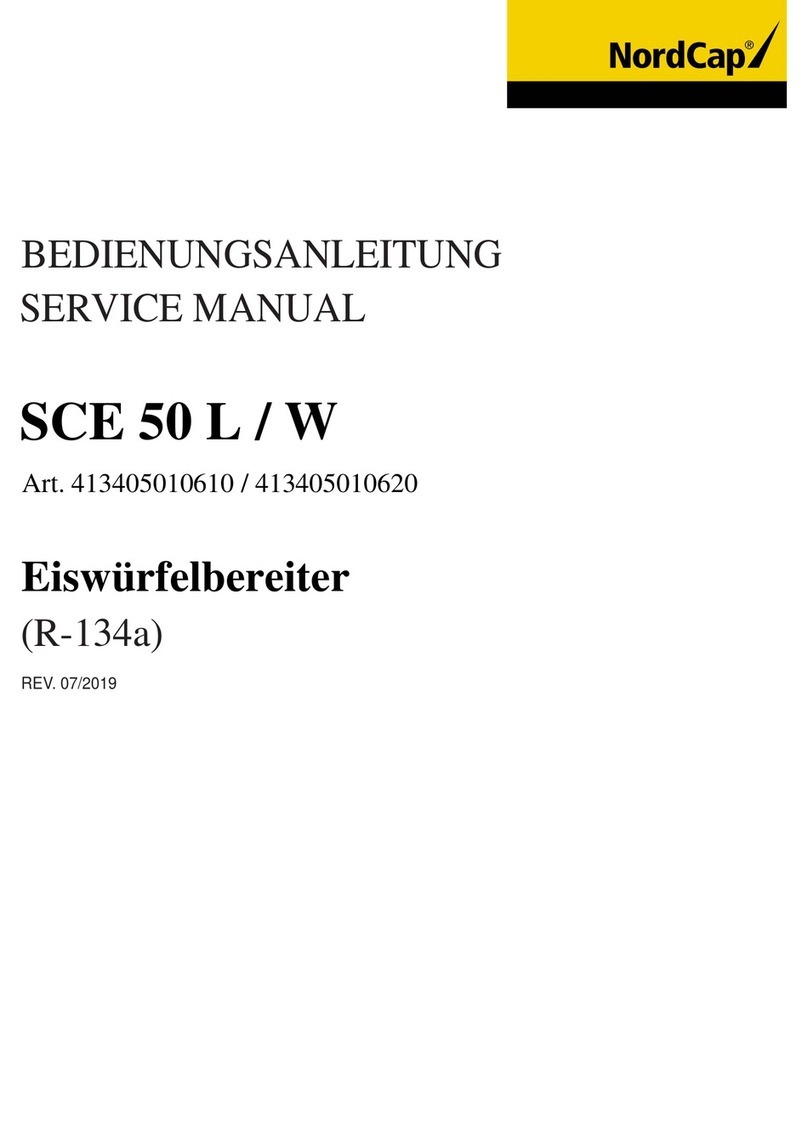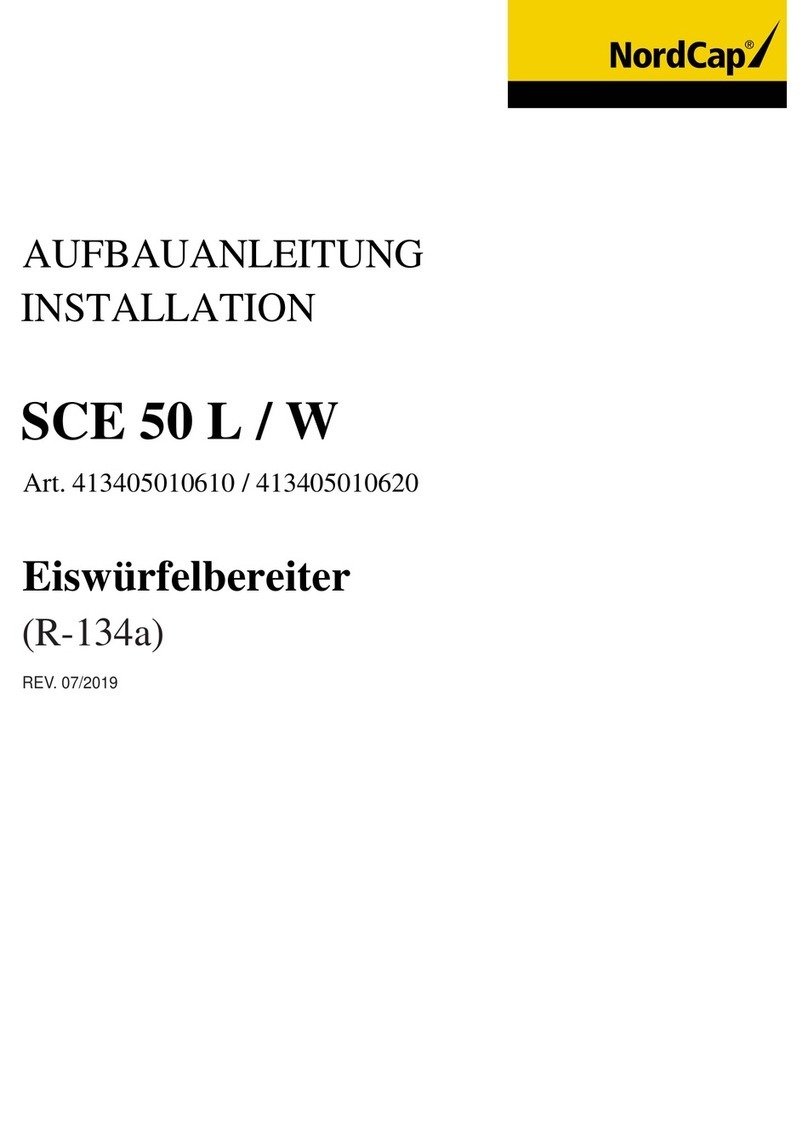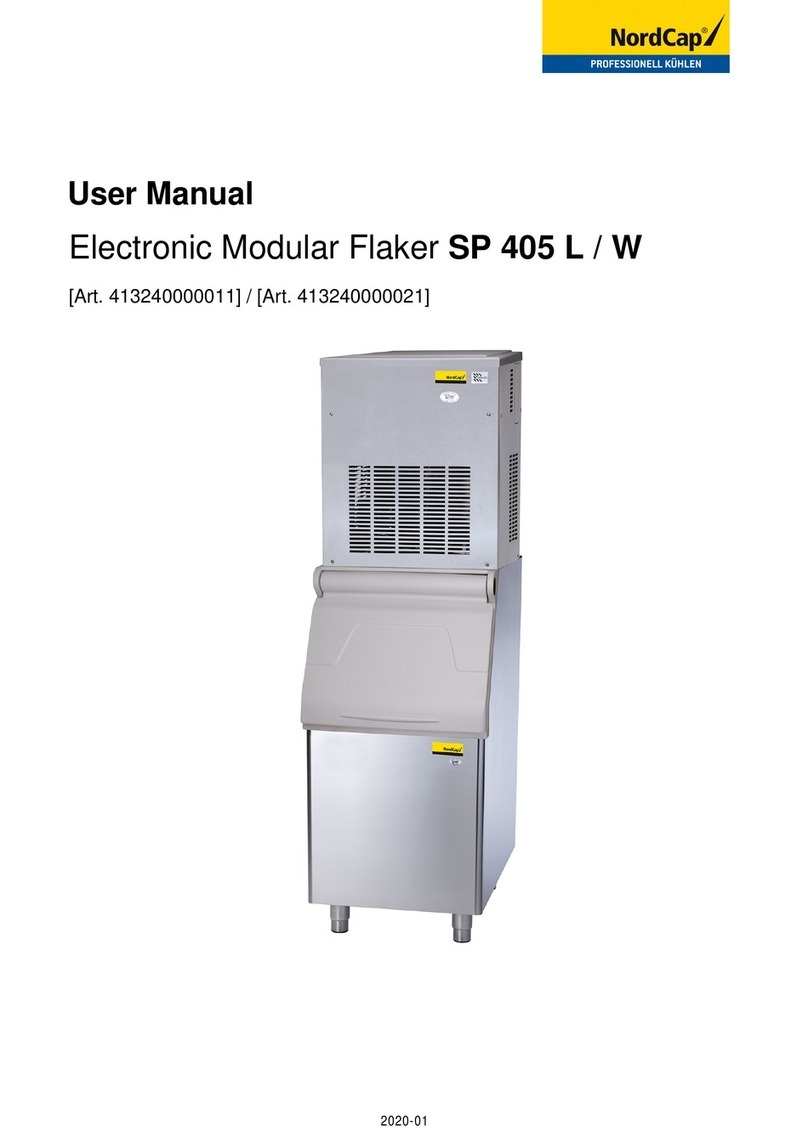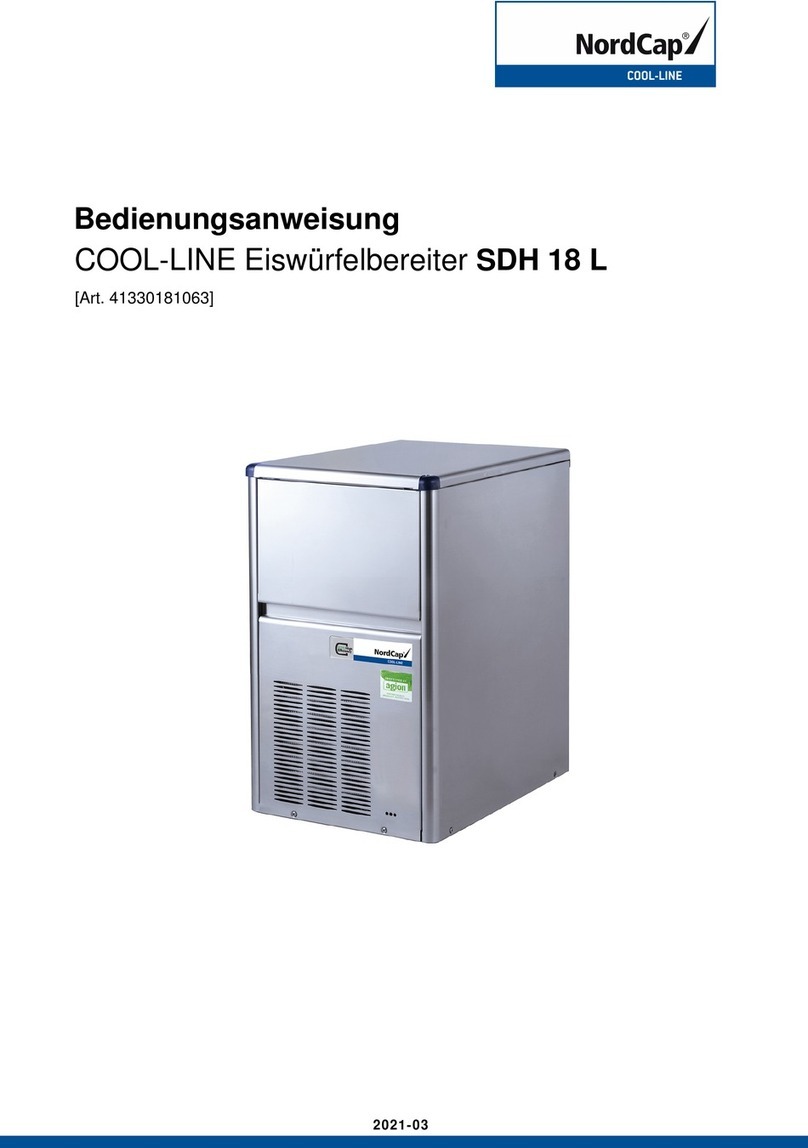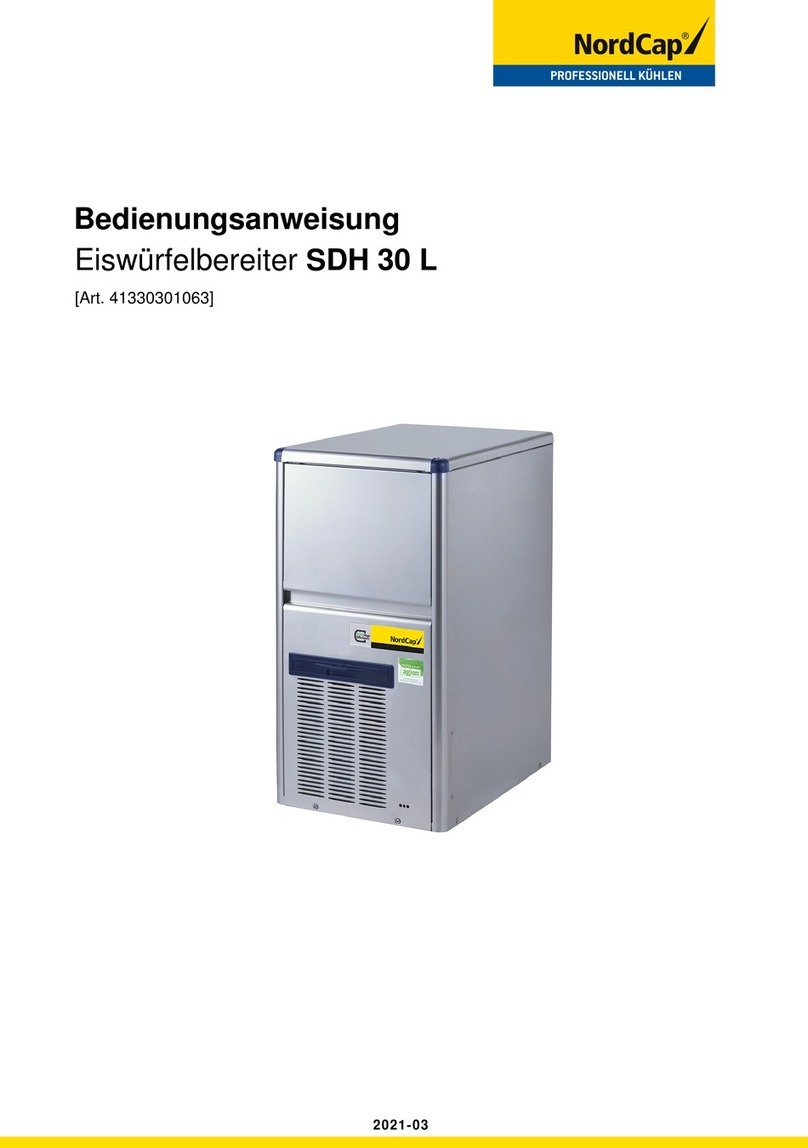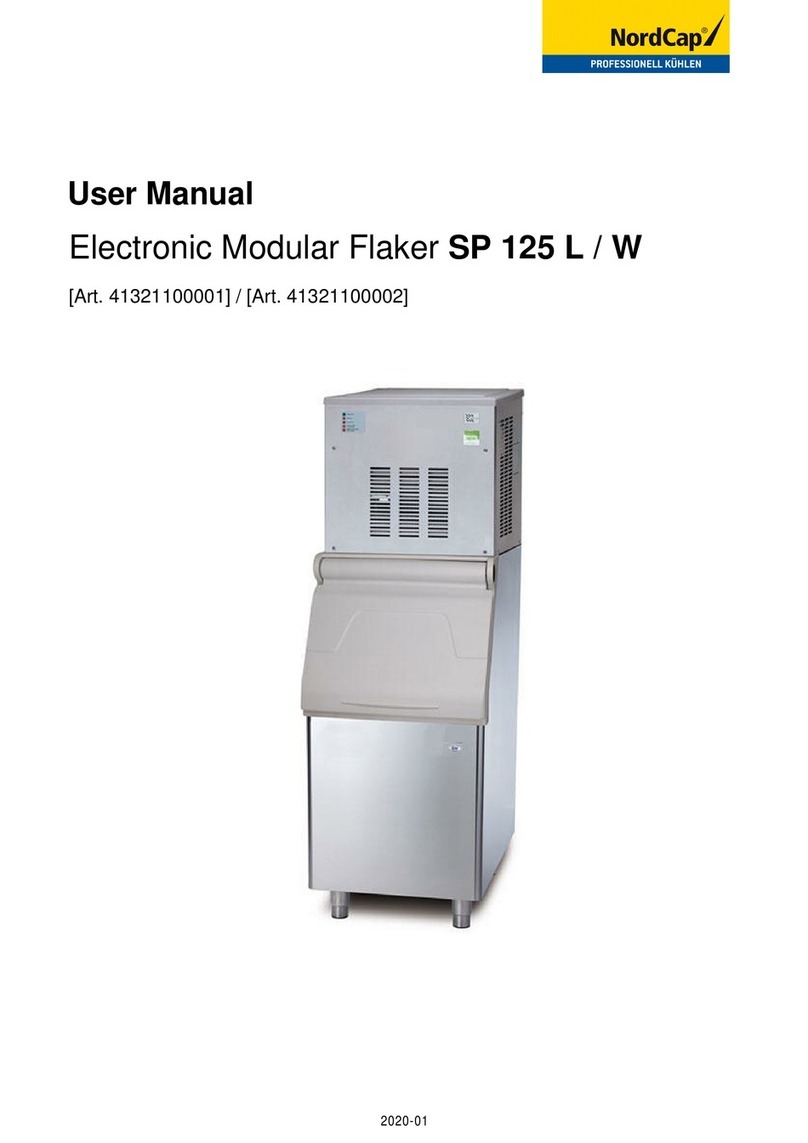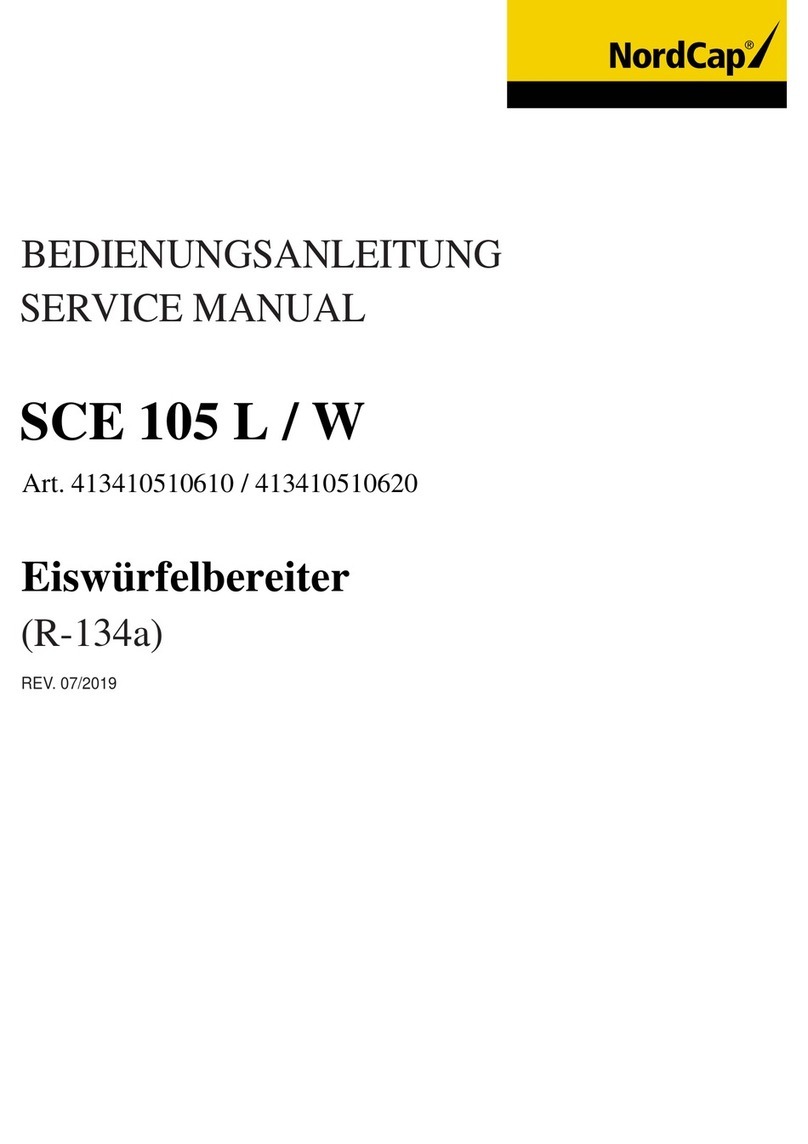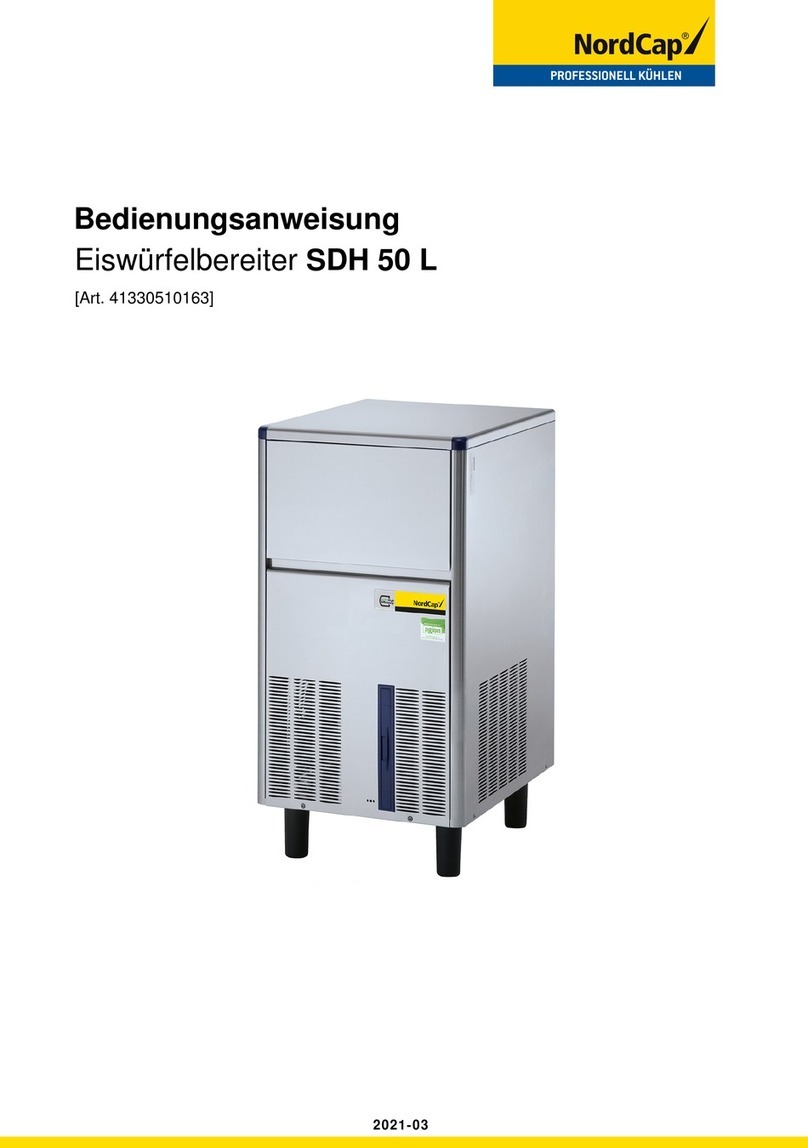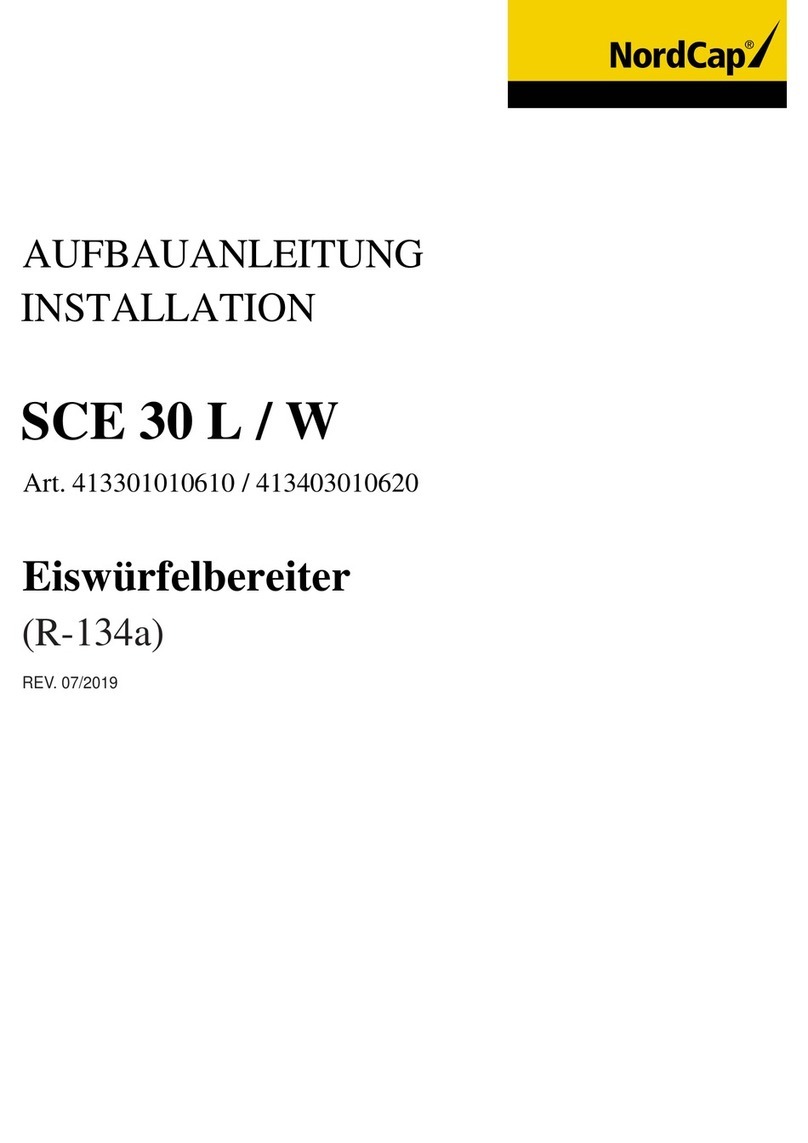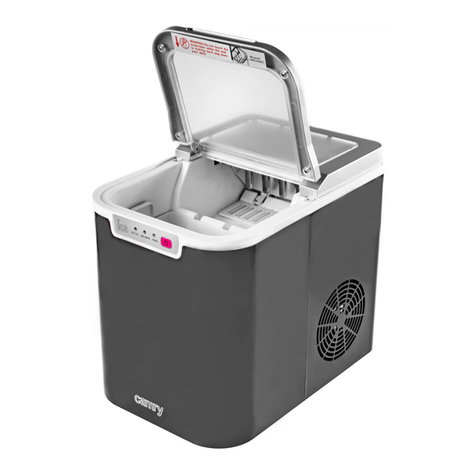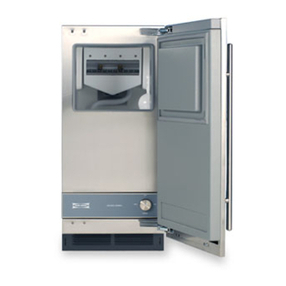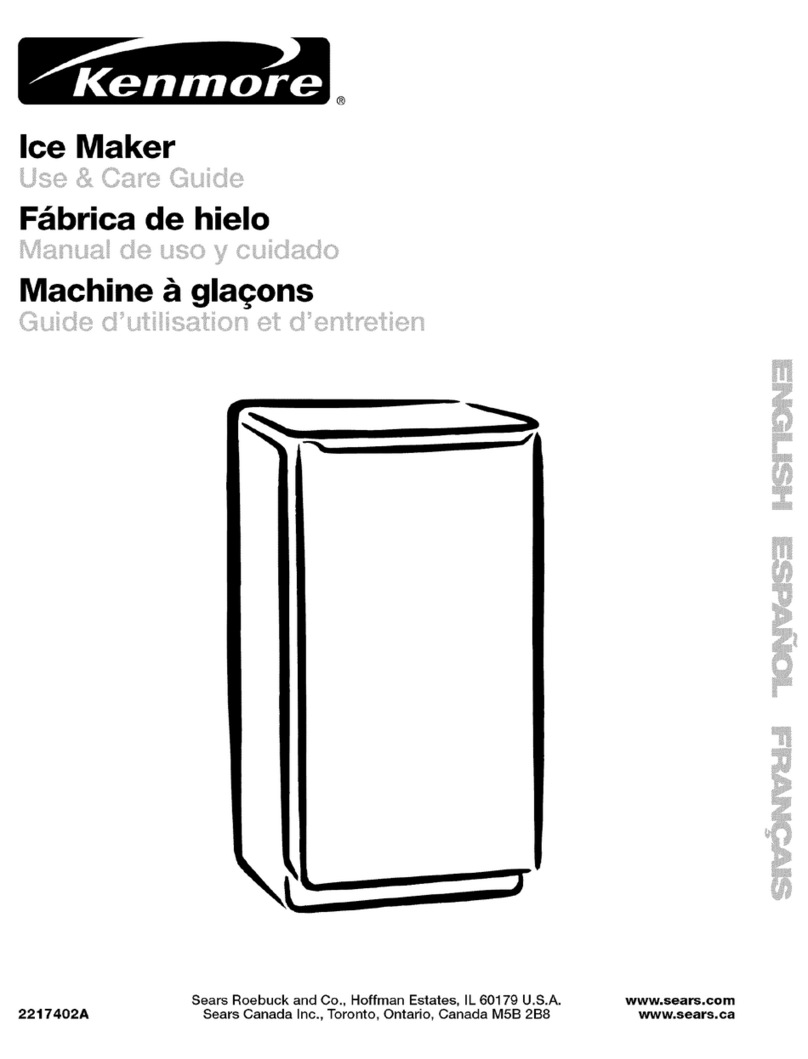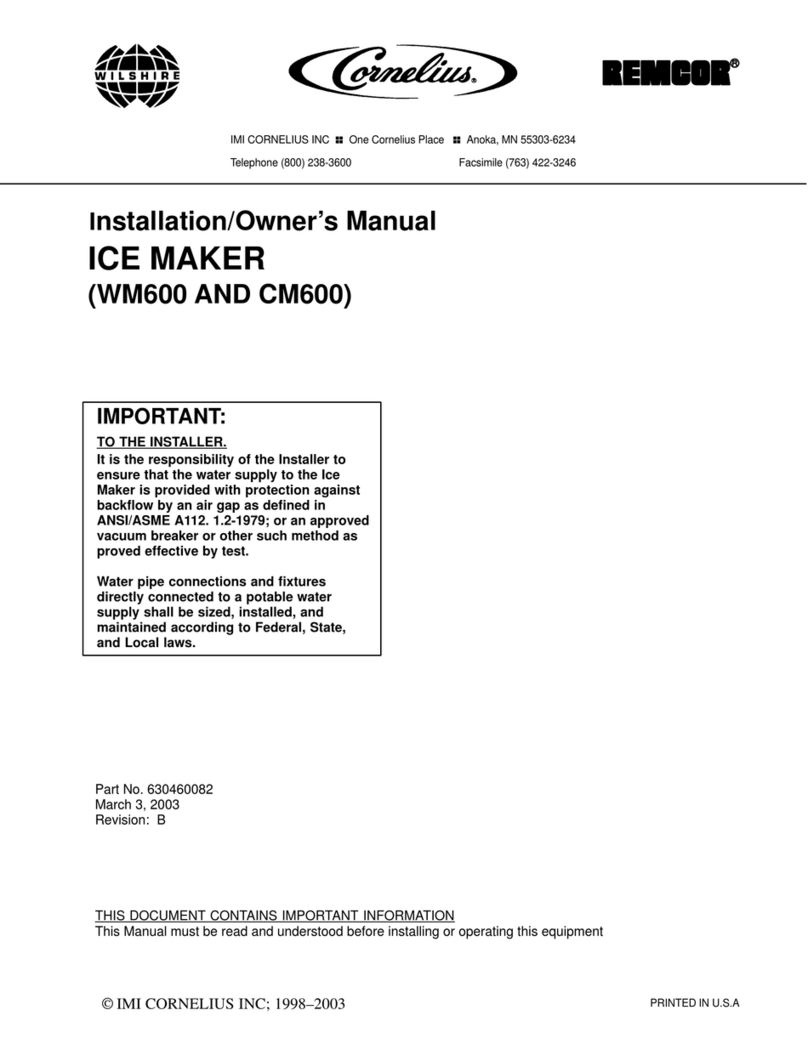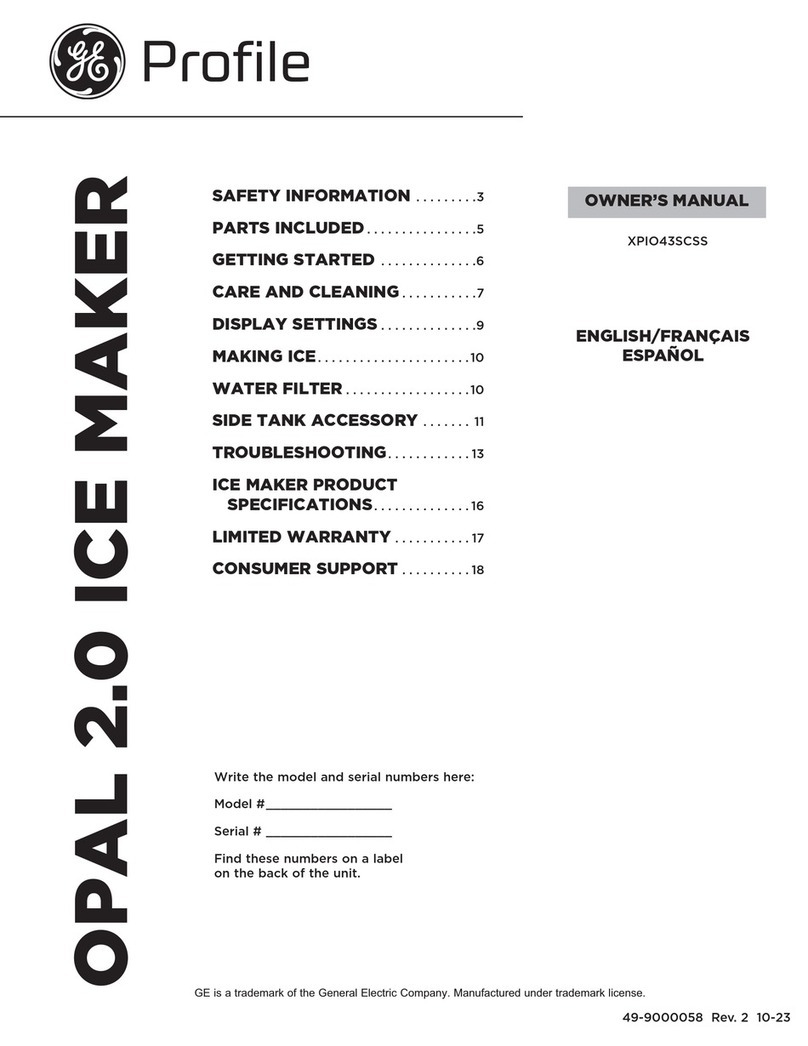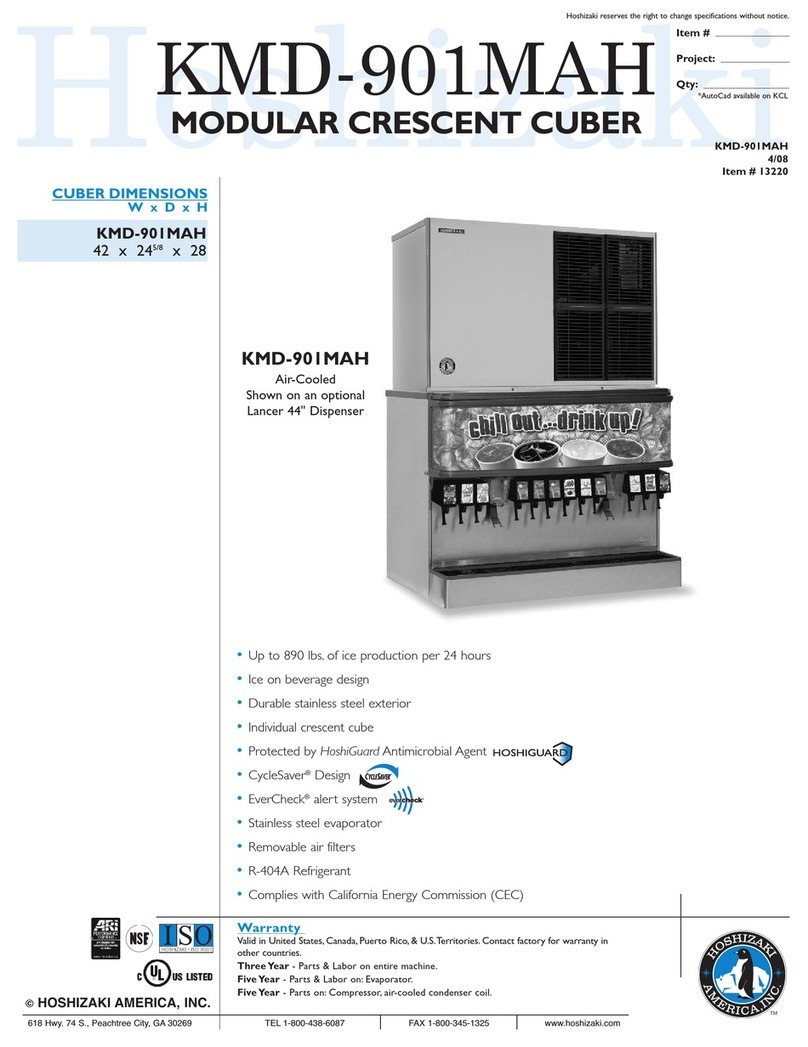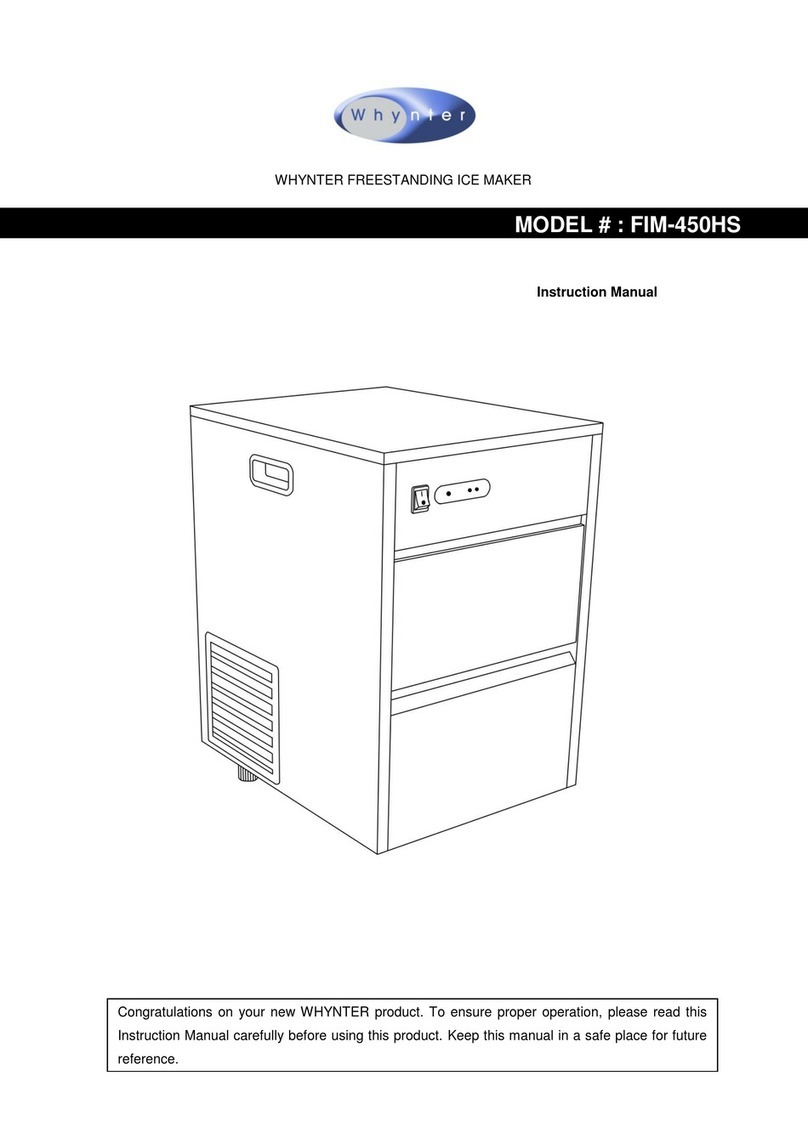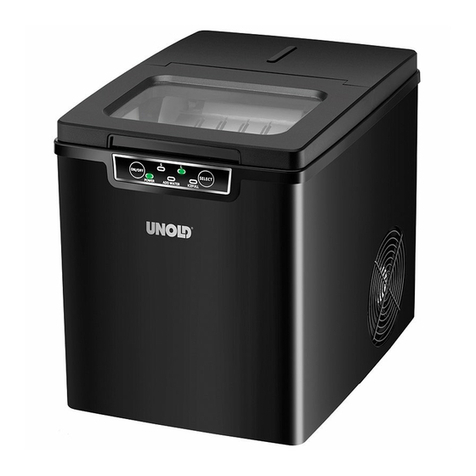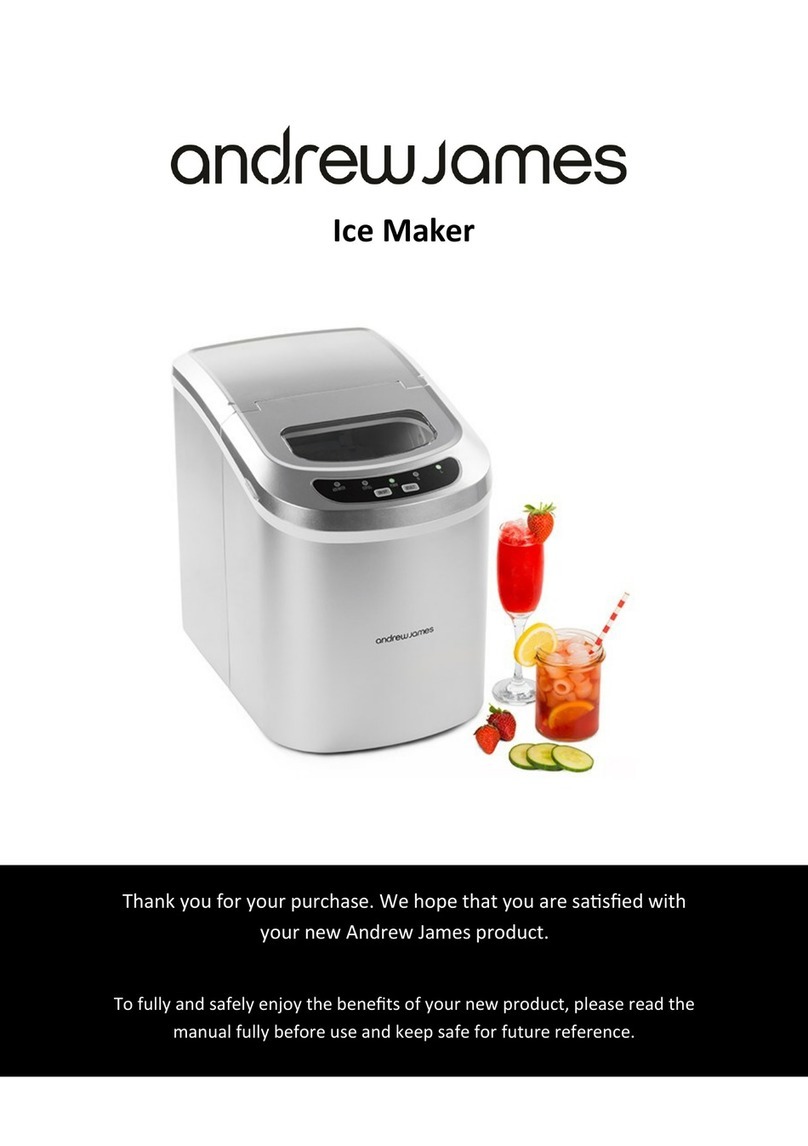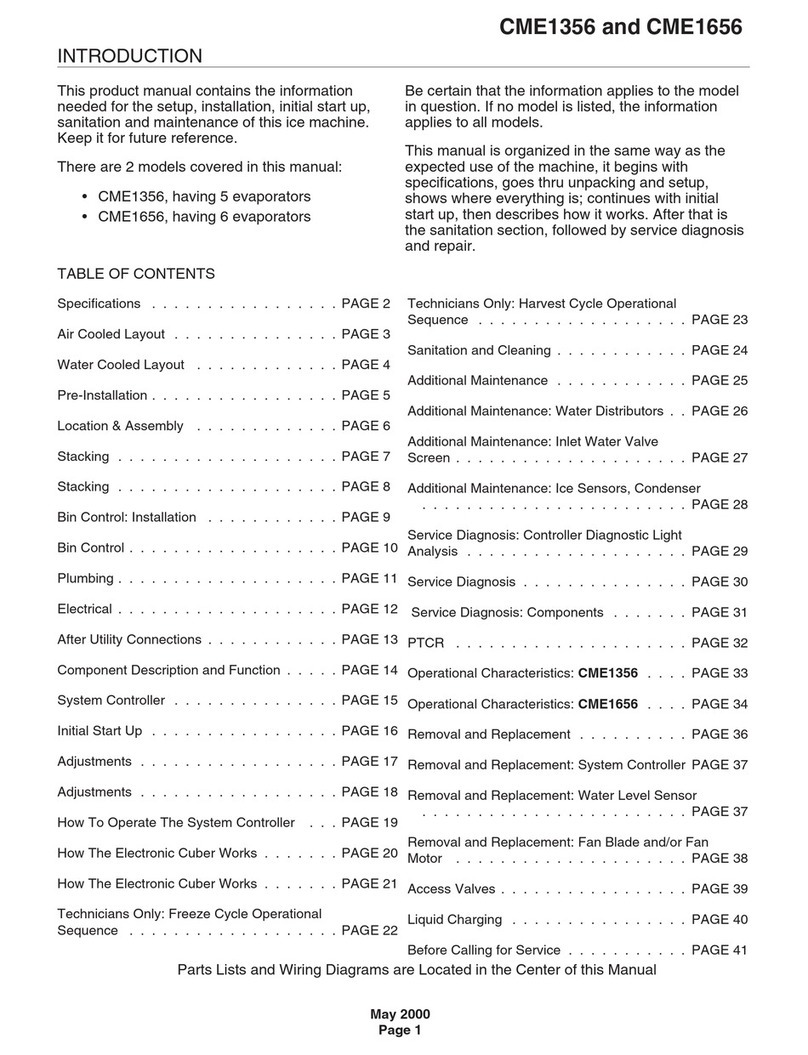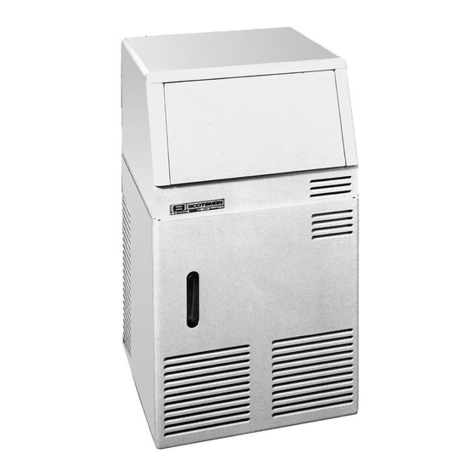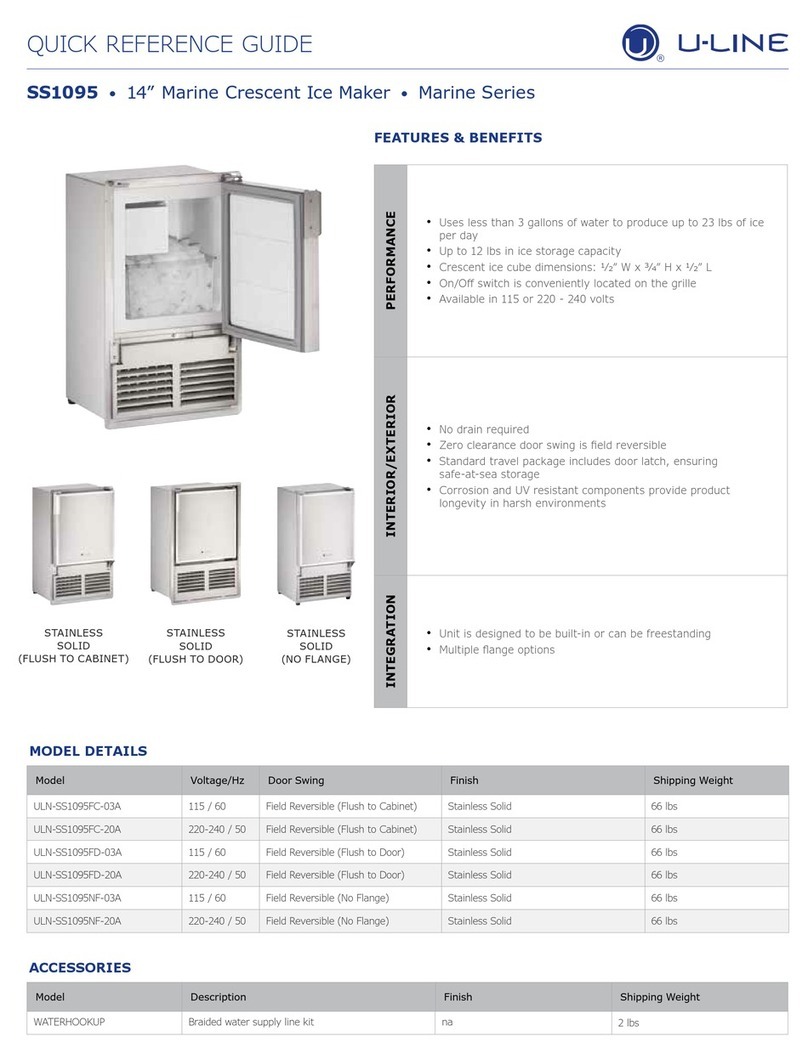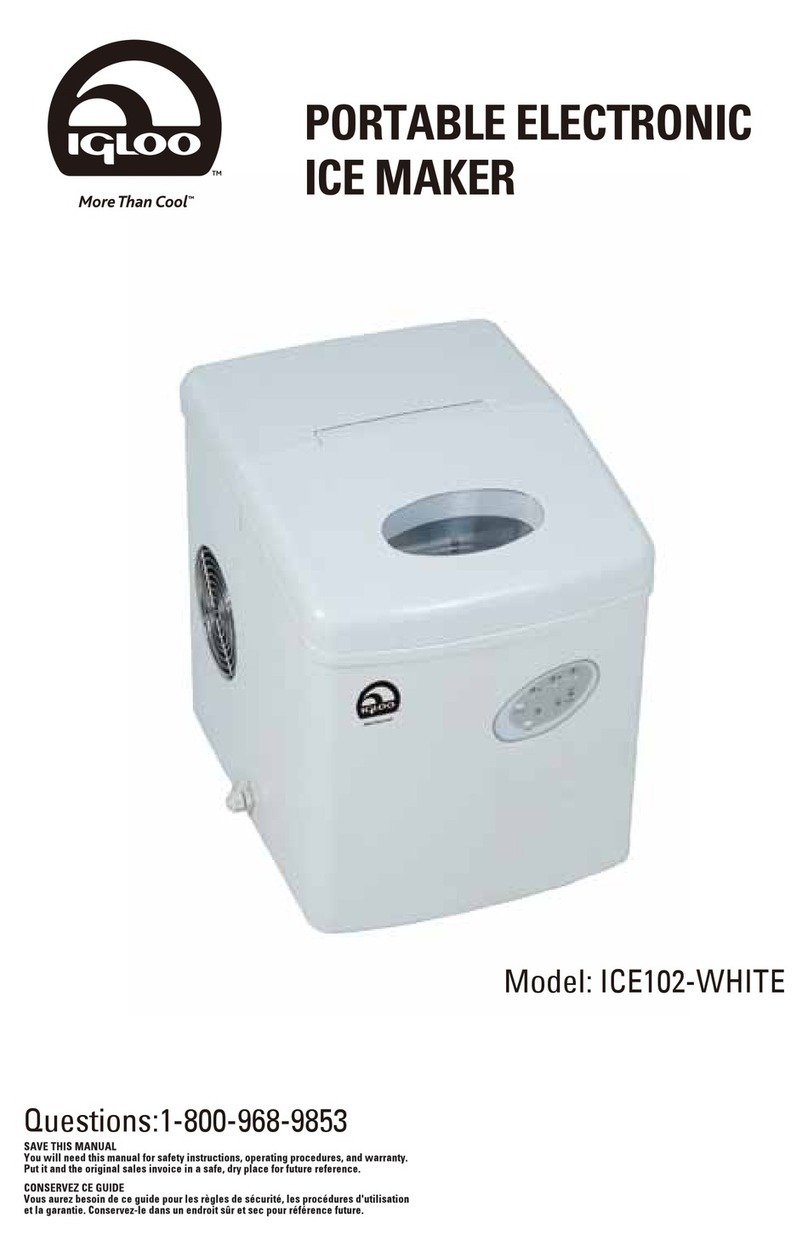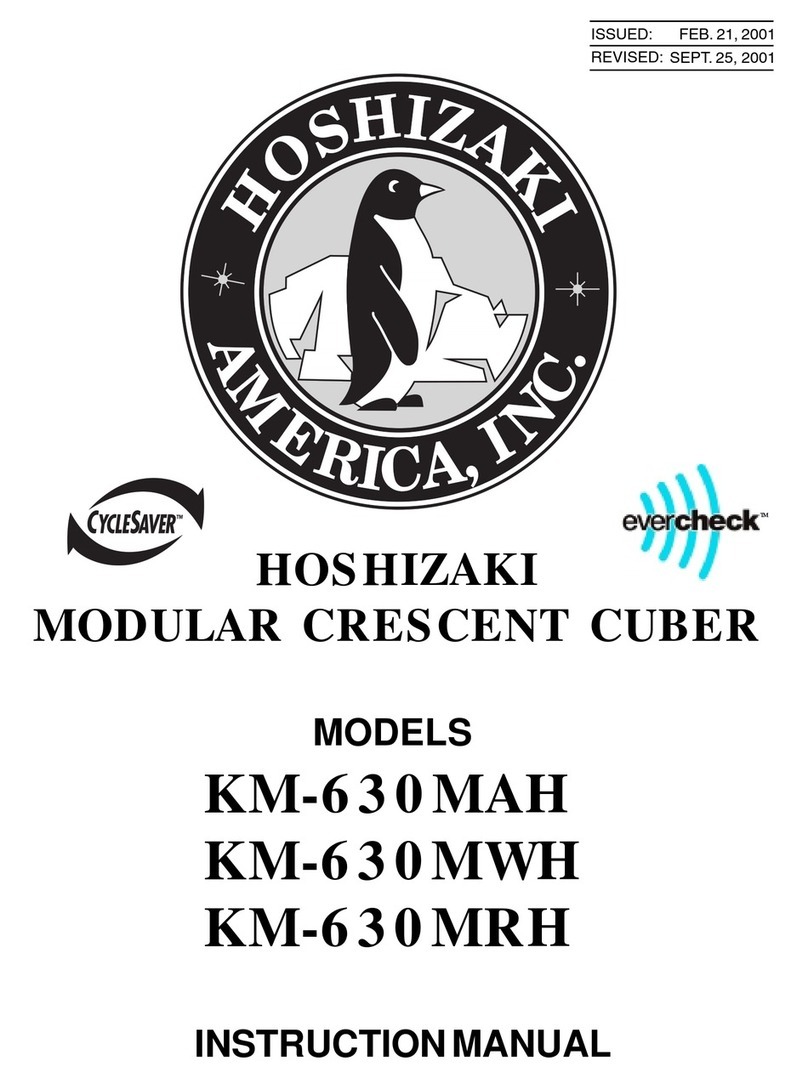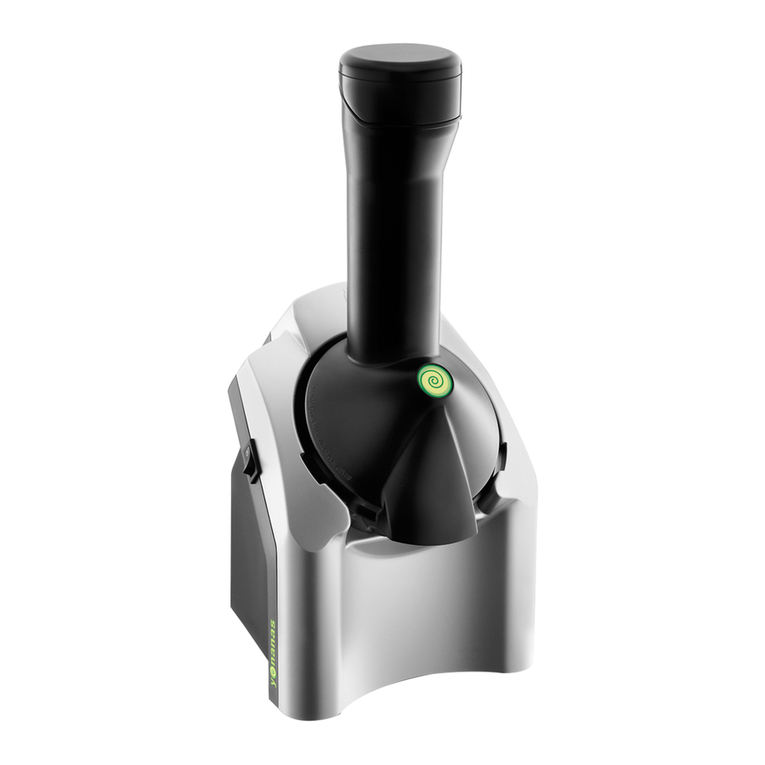
Page 23
NOTE. If, after ten minutes from the
compressor start-up, the evaporating tem-
perature has not dropped down to a value
lower than -1
°
C (30
°
F) the evaporating tem-
perature sensor detects such an abnormal
situation and stops consequently the unit
operation (first the compressor and 3' later
the gear reducer).
In this circustance, the 5th warning YELLOW
LED will blink.
The machine will remain in OFF mode for
one hour then it will restart automatically.
In case the unit trips OFF again in alarm for
3 times in 3 hours, the machine SHUTS OFF
DEFINITIVELY.
After having diagnosed and eliminated the
cause of the too hi evaporating temperature
(insufficient refrigerant in the system or
compressor not running) it is necessary to
unplug and plug in again to restart the
machine. The unit, before resuming the
normal operation, will go through the usual
3 minutes STAND-BY period.
OPERATION CHECKS UPON THE UNIT
START UP
D. Remove front service panel and, if
necessary, install the refrigerant service gauges
on the corresponding service valves to check
both the HI and LO refrigerant pressures.
NOTE. On air cooled models, the condenser
temperature sensor, which is located within
the condenser fins, keeps the head
(condensing) pressure between preset
values.
In the event of condenser clogged - such to
prevent the proper flow of the cooling air - or,
in case the fan motor is out of operation, the
condenser temperature rises and when it
reaches 70
°
C (160
°
F) for air cooled version -
and 60
°
C (140
°
F) - for water cooled version -
the condenser temperature sensor shuts-off
the ice maker (first the compressor and 3'
later the gear reducer) with the consequent
light-up of the RED WARNING LIGHT (Fig.3).
The machine will remain in OFF mode for
one hour then it will restart automatically.
In case the unit trips OFF again in alarm for
3 times in 3 hours, the machine SHUTS OFF
DEFINITIVELY.
After having diagnosed the reason of the
temperature rise and removed its cause, it is
necessary to proceed as per the previous
“NOTE” to start up again the operation of the
ice maker.
E. Check for the correct CUT-OUT and
CUT-IN of the water level sensor by first shutting
closed the water shutoff valve on the water
supply line.
FIG. 4
2
1
L
N
COMPRESSOR
9
10
11
12
13
3
4
5
6
7
8
CONTACTOR COIL
GEAR MOTOR
FAN MOTOR
ELECTRONIC
CARD
RELAYS
TRIAC
RESET
S E N S O R S
WATER
LEVEL
GEAR MOTOR ROTATION
CONDENSER TEMP.
EVAPORATOR TEMP.
ICE LEVEL CONTROL
TRANSF.
T>75°C
DATA PROCESSOR
11
10
9
1
2
L
N
8
7
6
5
4
3
13
12
